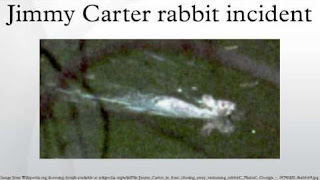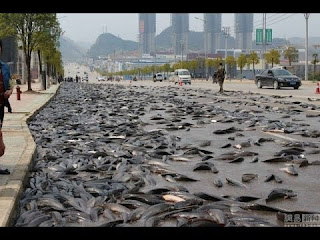A
'biblical disaster': Greek official on wildfires that have killed 50
A
'biblical disaster': Greek official on wildfires that have killed 50 originally
appeared on abcnews.go.com
USA TODAY July 23, 2018
Rounds of rainfall to escalate flood concerns in
eastern US this week
AccuWeather
July 24, 2018
Greece
wildfires: Tourists killed after deadliest blaze to hit country in a decade
Yahoo
News UK 7 hours ago
Greece wildfires
Wild: The uncontrollable
inferno took over trees near Athens. (Rex)
More
than 50 people have been killed by Greece’s worst wildfire in a decade.
The
devastating blaze ripped through villages, holiday resorts and rural areas near
Athens after being fanned by high winds.
Of
the 104 people injured, 69 needed hospital treatment and 11 were in a serious
condition, officials said.
Dozens
of cars have been left as charred shells and huge plumes of smoke still hang
over affected areas as rescue crews battle to extinguish the fires and find
survivors.
Flash
flooding sweeps across the country as record heat hits from Texas to California
Flash flooding sweeps across the country as record heat hits
from Texas to Californiaoriginally appeared on abcnews.go.com
Downpours
have triggered flash flooding across the country, with torrential rainfall
shutting down highways in Colorado and prompting floodwater rescues in New
Mexico.
Parts
of Maryland are also underwater, as in Pennsylvania, where the rain closed
Hershey Park.
Some
areas in the Mid-Atlantic are approaching 10 inches of rain already, with more
to come.
Flash
flood watches are in effect this week from South Carolina to New York state.
Meanwhile,
record heat is enveloping the West.
Waco,
Texas, saw its highest ever-recorded temperature of 114 degrees Monday.
Phoenix
and Palm Springs, California, hit daily
record highs of 115 and 119 degrees, respectively.
It even
reached a scorching 122 degrees Monday in Thermal, California, in the Coachella
Valley.
And
the heat isn't over.
Highs
Tuesday will be in the triple digits from Southern California to Oregon.
It's
expected to reach 113 degrees in Las Vegas, 103 in Dallas and 102 in Burbank
this week.
Heat
wave strikes the Arctic, and the climate enters the Twilight Zone
Jerry Adler 18 hours ago
Photo illustration: Yahoo
News; photos: Arnaud Bertrande/Getty Images, CBS, Getty Images.
We
pause now in our ongoing coverage of the end of Western democracy for a brief
consideration of the end of the world. Along with Robert Frost, we can say that
the question of fire versus ice as the agent of destruction
has been settled in favor of fire, and we even know where the fire is likely to
start: above the Arctic Circle, where an unprecedented heat wave has sent temperatures in the far
north of Sweden as high as 86 F. The Washington Post’s climate writer, Jason
Samenow, recently reported that the temperature (calculated by
extrapolation) in a part of northern Siberia reached 90 degrees earlier this
month, 40 degrees above normal. “It is absolutely incredible and really one of the most
intense heat events I’ve ever seen for so far north,” wrote meteorologist
Nick Humphrey. And after years of increasingly hot, dry
summers, the great forests in the far north, all around the globe, are starting to burn.
A
forest fire, like virtually all fires, releases carbon dioxide into the
atmosphere, accelerating the greenhouse effect that drives global warming. This
is especially true of wildfires at high latitudes, where trees grow back slowly, and where there are the
additional risks of carbon-dense peat bogs drying and burning, and also of
melting permafrost releasing huge quantities of methane. This illustrates one
of the perverse facts about climate change, that almost all the feedback effects are
positive (in the technical sense of self-reinforcing, not as in “good.”) As one
example, global warming melts ice and snow cover, which tends to reflect the
sun’s radiation out to space, while bare earth and seawater absorb it.
Higher
temperatures also cause more evaporation, putting more water vapor into the
atmosphere. Water vapor — “humidity” to those living in the rain forest, or
commuting to work on the subway — doesn’t just make the air feel hotter;
it’s a greenhouse gas all by itself, which is why the temperature drops more at
night in New Mexico than it does in New Jersey. Some climatologists have
hopefully suggested that more water vapor would increase cloud cover and
mitigate warming (a negative feedback loop), but the most recent assessment by
the International Panel on Climate Change suggests
that the net effect of increased evaporation on temperature will be either
neutral, or “positive” — i.e., worse.
Almost
the entire Northern Hemisphere has been hotter than normal this summer; Denver
hit an all-time high of 105 in June, around the same time that Oman reported the highest nighttime low temperature ever
recorded anywhere in the world, 109. As I write this, at 10 a.m.
Sunday in the East, it is 79 degrees in Austin, Texas, with a forecast high of
105, going up to 108 on Monday. It was so hot there last week that the Austin
Fire Department responded to a blaze caused by the spontaneous combustion of tortilla chips (technically,
the crumbs and waste from a chip factory that had been left outdoors in the
sun). A heat wave in Japan last week put 10,000
people in the hospital; at least 30 died.
It
is a convention of the media that any article about heat waves (or forest
fires, droughts or hurricanes) must be footnoted with the observation that no
one weather event can be definitively attributed to climate change. That
reflects both an appropriate caution on the part of scientists, and a
preemptive rebuttal to climate-change deniers like Sen. James Inhofe, who a
couple of years ago noticed that it was cold in February and sought to cast
doubt on decades of climatology by bringing a snowball to the floor of the Senate.
But that consensus is beginning to break down. The rule that where there’s
smoke there’s fire, which political reporters have begun to apply
metaphorically to evidence of Trump campaign collusion with Russia, should apply equally to science reporters covering actual
fires.
Inhofe,
a mentor to former EPA Administrator Scott Pruitt, has come in for occasional ridicule for his belief that
weather and the climate are entirely in God’s hands, absolving the coal and
petroleum industries of responsibility. That is a fairly common belief among
extreme conservatives. Of course, not all his Republican colleagues get their
scientific information from the Bible. As reported in Climatewire, Scott
Wagner, the Republican candidate for governor of Pennsylvania, placed the blame
squarely where it belongs, on human activity. Unlike most scientists, though,
the activity he had in mind wasn’t burning fossil fuels, but, uh… procreation:
“We have more people,” he mused at a panel
discussion last year. “You know, humans have warm bodies. So is heat coming
off?”
It’s
true, an average person at rest generates as much heat as a 100-watt light bulb
— which if you think about it, isn’t really that much. But human beings are
fueled by food, which is to say, ultimately by sunlight, so their metabolism
doesn’t actually contribute any net gain of heat to the atmosphere — it’s just
moving calories around, from cropland to the places people live. If people
walked instead of drove, they would generate (marginally) more body heat, but
fewer greenhouse gases and less climate change.
Wagner
had another possible explanation. “I haven’t been in a science class in a long
time, but the Earth moves closer to the sun every year — you know the rotation
of the Earth,” Wagner said, at the same panel discussion at which he unveiled
his theory that global warming is caused by an excess of people. “We’re moving
closer to the sun.”
The
Earth does move closer to the sun during the course of each year — and then
further away for the next six months — but on average it isn’t noticeably
closer than it was before scientists noticed that the climate was changing.
Also, inconveniently for Wagner’s theory, July is actually when the Earth is farthest away from the
sun. (To save him the trouble of going back to high school, the
change in seasons is a factor of the way the Earth’s axis is tilted, not how
far it is from the sun.)
“His
comments were meant to illustrate that there are a lot of theories about what
causes global warming,” his campaign manager told reporters. “Scott is
running for governor, not to be a scientist, so he will leave it up to
scientists to figure out what the cause of global warming is.”
But
scientists actually have figured it out, and if politicians would just listen
to them and act on that basis — as they are doing in the rest of the world — we
could go a long way toward solving the problem. One Republican who understands
that is Rep. Carlos Curbelo of Florida, who is introducing a carbon-tax bill this week. Curbelo,
not by coincidence, represents a district that stretches south from Miami to
the Keys, an area that is considered vulnerable to both a Democratic wave in
November and the kind of wave that comes from the ocean with rising sea levels.
Curbelo is a co-founder of a bipartisan group called the Climate Solutions
Caucus, which currently claims 43 Republicans; together with the entire
Democratic caucus, that adds up to a majority of the House. But getting a
proposal with “tax” in its name through Congress and signed by a president who
is fond of boasting about how much he loves coal has (extrapolating to sometime
in the not-too-distant future) a snowball’s chance at the North Pole.
As
for Wagner, he didn’t say where he got his theory. Presumably it wasn’t in
science class, but one possibility is this
memorable episode of “The Twilight Zone” from 1961. As Rod
Serling so presciently put it:
“The
time is five minutes to twelve, midnight. There is no more darkness. The place
is New York City and this is the eve of the end, because even at midnight it’s
high noon, the hottest day in history, and you’re about to spend it in the
Twilight Zone.”
We
are there now.









































































